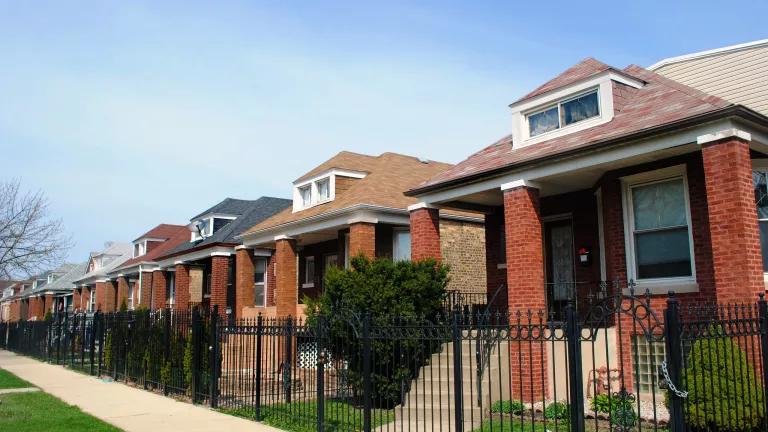How to Make Efficient Air Conditioners Cool in India
With early heat waves sweeping across cities in India this year, keeping cool is a major challenge. In addition to energy efficient-buildings and cool roofs, more climate-friendly air conditioning is one key solution. Companies in India and across the globe view the South Asian market, especially in Indian cities, as rapidly growing market for air conditioners. The Indian government also recognized the opportunity for “green air conditioners” with the new procurement announcement by Energy Efficient Services Limited (EESL) and India’s strong support of the Kigali Agreement, an international agreement to phase down the use of climate-harming HFCs. NRDC and partners are engaging with air conditioning business leaders to identify strategies to accelerate market transformation to more efficient and climate friendly cooling.
Overall, leading manufacturers of air conditioners, both Indian companies and global companies operating in India, acknowledge the need for more efficient and climate-friendly cooling. Industry leaders are looking forward to market trends and providing cost-effective cooling solutions. Five key insights from our discussion are:
1. Businesses in India embrace “green air-conditioning” that combines energy efficiency and climate friendly cooling. Businesses recognize green air conditioning as an increasingly important feature and are eager to develop strategies to stand out in the eyes of the consumer. Almost all leading manufacturers have introduced high efficiency models this year to tap into consumer demand for efficiency. Training for field sales staff includes tools to calculate energy savings and tips on choosing products with climate friendly refrigerants.
2. Business leaders expressed the need for stronger government policy to support domestic manufacturing of air conditioner components. Currently, key components of air-conditioners – such as heat-exchangers, microprocessors and compressors – are imported, contributing to increased costs for the consumer. Fluctuations of the currency exchange rate further adds to import costs. Air-conditioner manufacturers express the need to localize component supply, citing the example of the auto industry which, beginning two decades ago, reduced their costs by localizing their supply chain. With support from the Indian government’s Make in India initiative, the air conditioning industry could invite investment and collaboration with overseas component manufacturers. Additionally, the government could consider creating tax incentives for high efficiency air conditioner components in the new uniform goods and services tax (GST) which is being rolled out across the country. Investment in local manufacturing can yield benefits in redesigning air conditioners for higher efficiency while moving out of refrigerants with high global warming potential.
3. Air conditioner manufactures urged expanded government labeling programs to raise consumer awareness. Sales of efficient, 5-star rated air-conditioners are currently less than 20% of total air-conditioner sales in India. Consumers tend to look for lower upfront costs, often unaware of the lifetime of energy bill savings offered by 5-star products. But consumers do have a high recall of the Star rating program developed by the Bureau of Energy Efficiency, which can be strengthened by adding annual operating costs to the product label to better inform purchasers. Consumer materials and resources on selecting right sized air conditioners for optimal comfort and savings, as well as on climate friendly refrigerants, would also help purchasers make more informed decisions. We also heard suggestions to incentivize higher efficiency products such as waiving off the Star label fee for 5 star units. Electricity distribution companies have a lot to gain from efficiency, as a reduction in peak demand can help them serve their customers better and can partner with manufacturers and retailers to implement efficiency programs.
4. Implement building energy codes to enforce performance standards and increase occupant comfort. India has adopted the Energy Conservation Building Code (ECBC) which sets minimum efficiency requirements for commercial buildings. Compliance with the building energy code serves twin purposes – buildings are constructed to reduce heat gain which makes air conditioners more effective; and the code provisions ensure that chillers, commonly used for central cooling in commercial buildings, conform to minimum energy performance standards. Most manufacturers have played an active role in setting the ECBC standards and are interested in a robust compliance framework. Building energy codes also promote passive, low-cost technologies such as cool roofs which not only increase occupant comfort but, implemented on a large scale, can mitigate urban heat island effect, thus leading to energy savings for the entire city.
5. Move the market with bulk procurement and institutional buyers. Institutional buyers such as banks, hospitals and hotels are moving quickly to integrate energy efficiency into their buildings. This trend presents a huge opportunity for manufacturers of efficient air-conditioners to increase sales while generating greater energy savings for these buyers. Procurement programs, such as the one announced by EESL, invite manufacturers to bid for large sales volumes while meeting high efficiency requirements at a competitive price. Large sales volumes can have a significant impact on a manufacturer’s market share and clearly demonstrate efficiency as a source of competitive advantage.
Just six percent of households in India have a room air conditioner, but that number is expected to double in the next three years. Given the average lifetime of air conditioners as 10 years or more, moving the market to high efficiency can lock in savings for years to come. With climate change, as heat waves increase in frequency and intensity, transitioning to more efficient, climate friendly cooling protects health of India’s citizens and saves money and energy while being a smart business choice for the industry.
Laasya Bhagavatula and Alex Hillbrand contributed to this blog.




